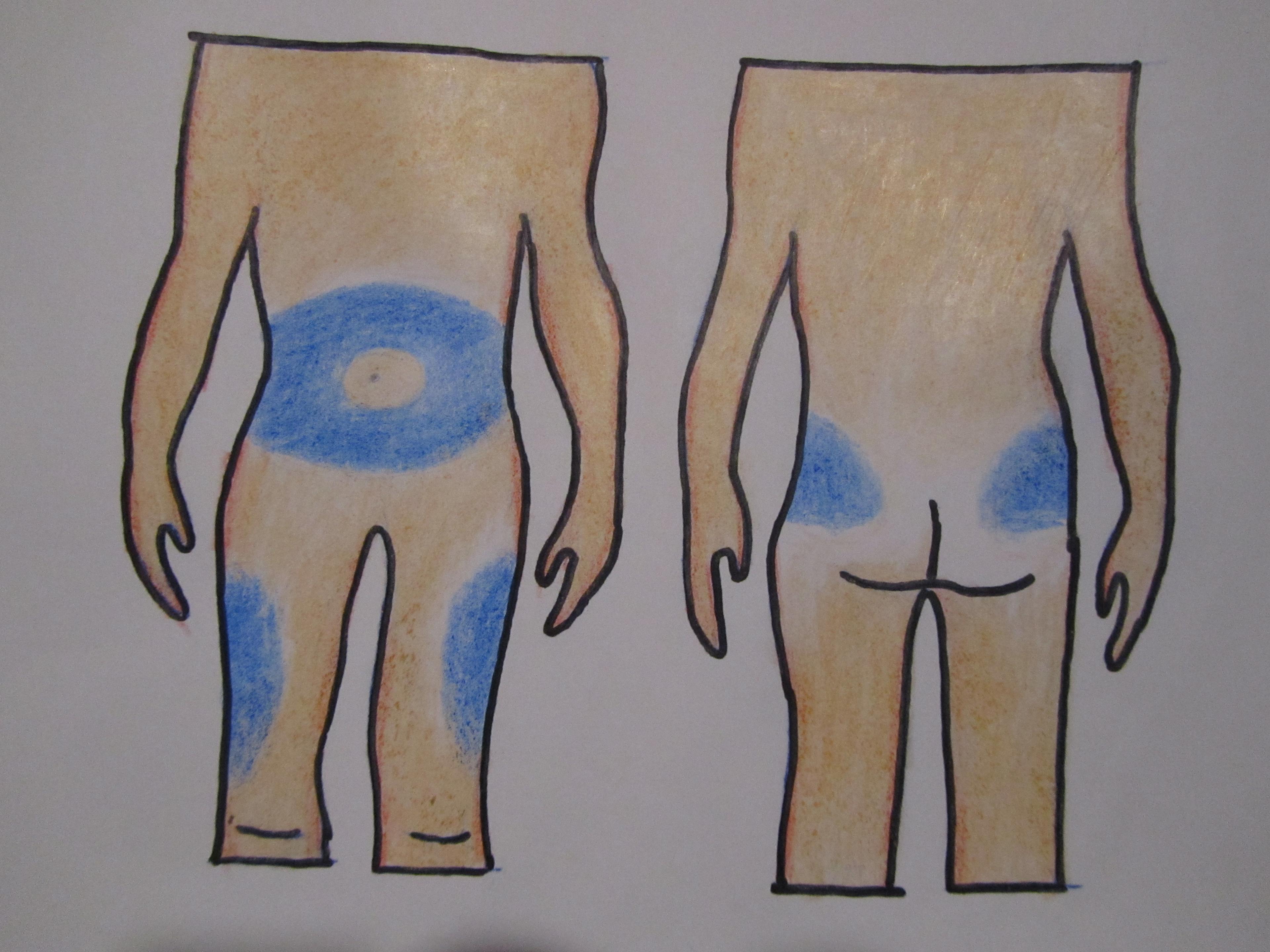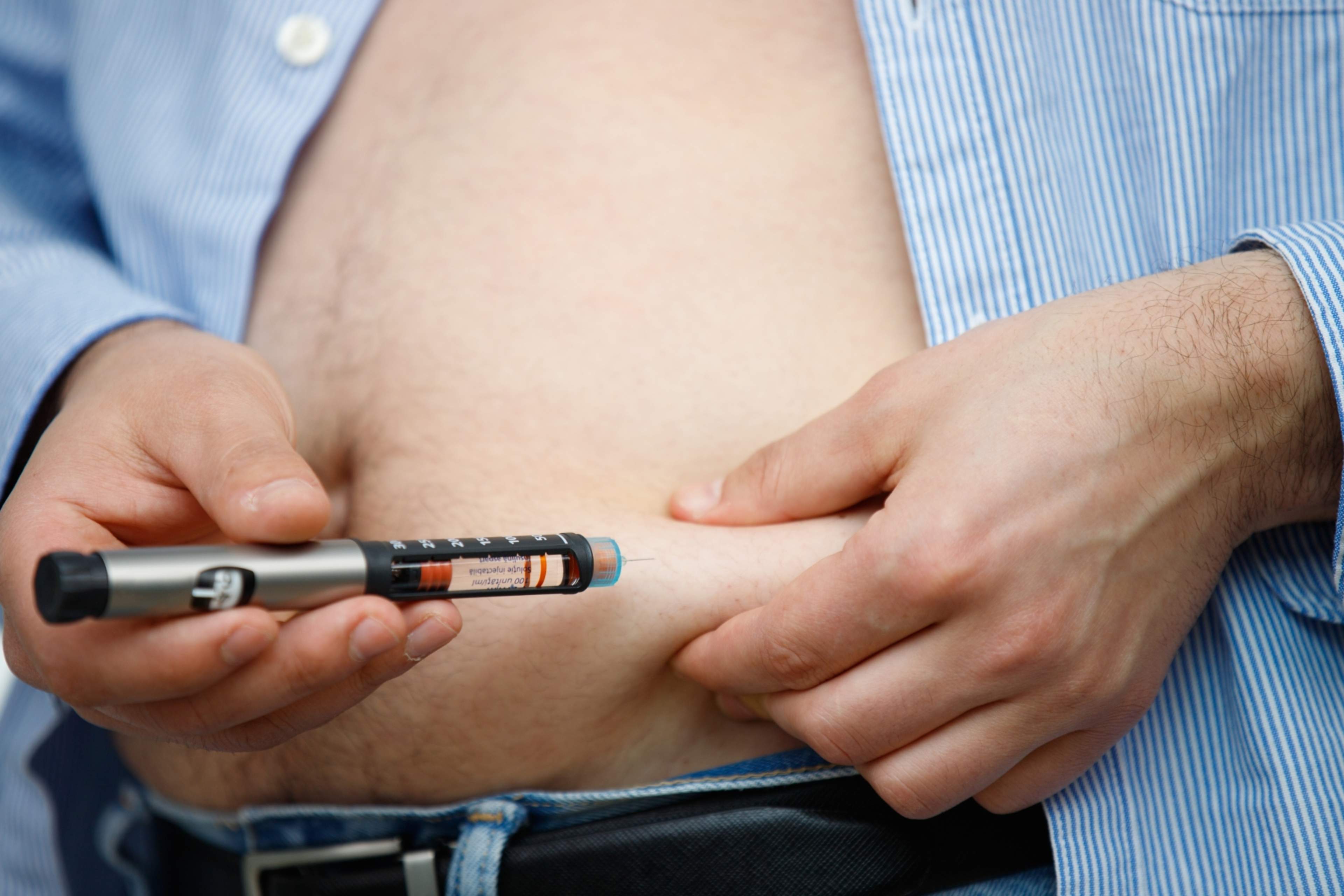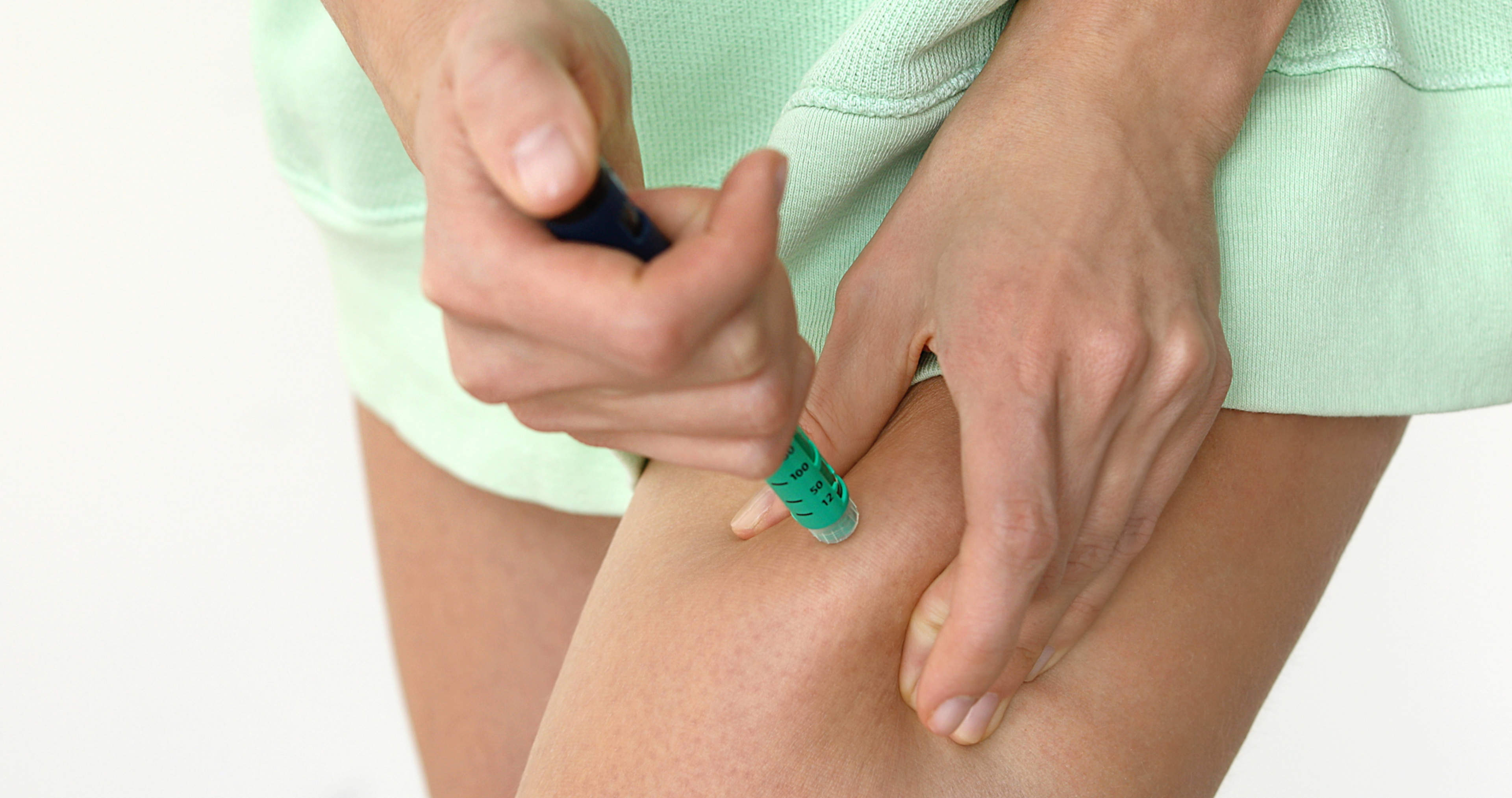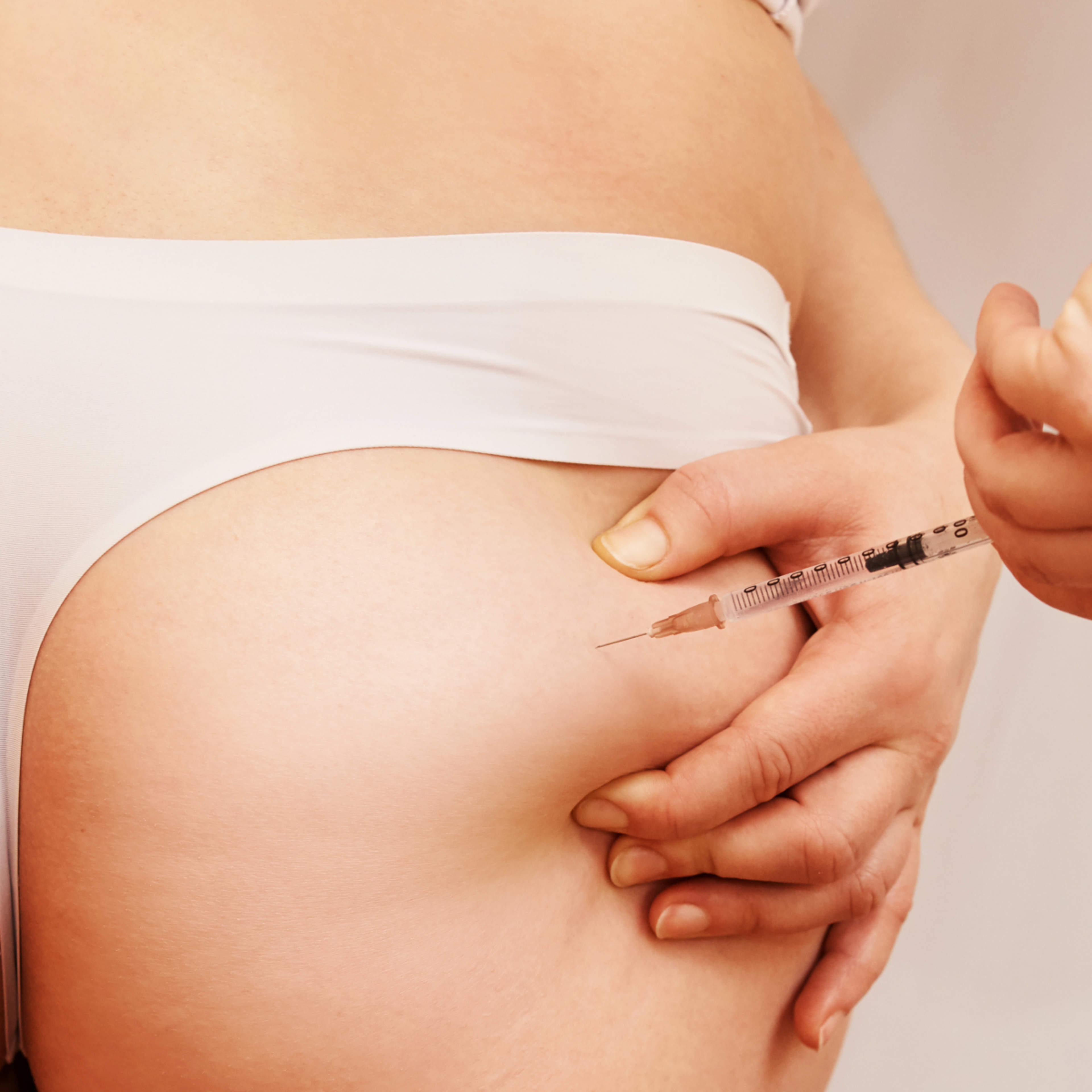Insulin is normally injected into the abdominal area, sides, outer edges of thighs or upper part of buttocks.
The location of the injection or, for insulin pump therapy, cannula is significant with regard to how well the insulin is absorbed and thereby how effective it is.
There may be slight variation in how well the insulin product is absorbed, depending on the circulation and amount of body fat in the injection site. Usually, insulin is more readily absorbed from the abdominal area compared to the thigh or buttocks.
Rapid-acting insulin is usually injected into the abdominal area because it is imperative that the insulin acts as quickly as possible when injected at mealtimes or to correct blood sugar.
Long-acting insulin is normally injected into the thigh or buttock area because the goal is to achieve an even, long-lasting effect. If there is little body fat in the thighs or if it feels awkward to inject there, long-acting insulin can also be injected into the side or the edge of the abdomen.
Temperature and circulation in the injection site have an effect on absorption. This is why sauna, exercise or massaging the skin speeds up the absorption.
Rotate injection sites widely
The distance between two consecutive injections should be at least the breadth of two fingers. Vary and circulate the injection sites as much as you can. Repeatedly injecting into the same site strains the tissue, reduces the condition of the injection site and may lead to callus formation.
Where you inject and the condition of the injection site also play an important role in terms of how fast the insulin is absorbed and how effective it is, which is why injection sites are checked regularly.





